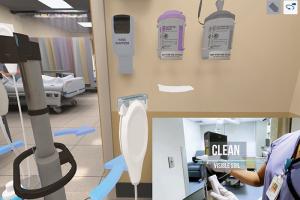Health care's wireless migration
As editor of a publication dedicated to bringing you information on technology and process innovations that are changing the hospital built environment, we’ve spent much time and space covering the growth of wireless applications throughout health care facilities.
Whether it’s for building automation, patient monitoring, facility security, supply chain management, nurse communication, patient education or the interoperability of any number of devices under the Internet of Things rubric, wireless connectivity is fast becoming an expectation in today’s hospitals.
Among the most authoritative reviews of this progress is Health Care's Most Wired information technology (IT) survey, published annually by our sister American Hospital Association publication, Hospitals & Health Networks (H&HN). By tracking the innovators and early adopters in hospital and health system IT, the study provides a glimpse into where the rest of the health care field is ultimately heading.
The most recent of these surveys, published last month in H&HN, reveals that the move to wireless continues apace.
On the infrastructure side, fully 68 percent of these cutting-edge hospitals and health systems boast a single, unified enterprisewide, medical-grade wireless infrastructure that runs clinical and other applications with 99.9999 percent reliability.
Another 18 percent have a single wireless infrastructure that runs at least 75 percent of applications, and the remainder have multiple discrete wireless networks for different purposes, such as for clinical, biomedical, physician and public use.
Moving into individual wireless applications or technologies, virtually all of the Most Wired hospitals and health systems have 802.11 computer networks and electronic health record/clinical information systems.
Additionally, 90 percent or more of these technology leaders use wireless infrastructure for bar code medication administration and supply scanners, handheld devices, patient monitoring and telemetry, nurse call and paging, cellular service and Voice over Internet Protocol communication, video monitoring, security communication and systems, and infusion pumps.
As health care's technology leaders embrace the promise of wireless hospitals and clinics, health facilities professionals in hospitals and health systems later in the technology-adoption cycle must ask themselves how they will usher their organizations into a wireless future that is all but inevitable.




